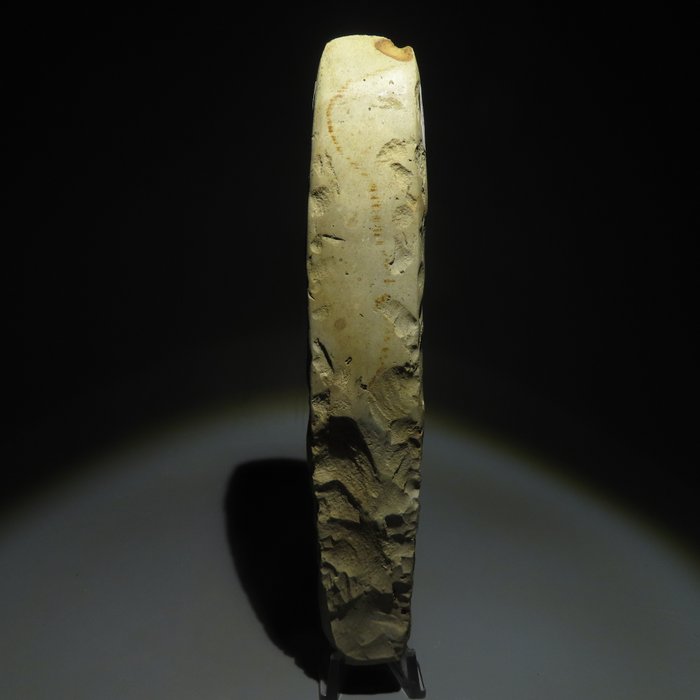
Neolitic Piatră Vârf de lance. ca. 1000 î.Hr. 18,5 cm H.
Nr. 82784793

Nr. 82784793

Axe Blade.
Scandinavian Neolithic, c. 3.900–2.600 BC.
Stone
19 cm H.
CONDITION: Good condition.
PROVENANCE:
- Private collection, Jacques-André Cronier (1956 - 2019), Mezièrs le Cléry, France.
- By inheritance to its previous owners.
- Art market, France, 2023.
DOCUMENTS: Provided of a certificate of authenticity and export license by the Ministry of Culture.
DESCRIPTION:
An axe blade worked from fine flint flint in grey. It was carefully polished while maintaining a symmetry in shape, but retains percussion marks, providing an effective, slightly convex cutting edge with some evidence of re-sharpening due to use.
The fine-pointed axe is usually made in flint, but some may be found in other stones depending on whether or not the area is rich in the material. They tend to be seen as a working axe, and originate from approximately 3700 - 3200 BC. Older specimens are generally longer and wider, with a thinner end than the later thick-tipped axe. The thin-tipped axe was good for felling trees, probably in the context of timber procurement.
This tool dates from the North-West European Neolithic, the period when northern European societies began to adopt agriculture. The magnitude of the changes during this time cannot be overstated. The transition of societies from hunter-gatherer to a more sedentary, farm-oriented existence is one of the most critical moments in human history, ultimately allowing the emergence of civilisation. It was these stone tools that paved the way for this development, cutting down the ancient forests that had supported hunter-gatherer societies for thousands of years and allowing the growth of crops and animal grazing.
The Neolithic Scandinavians were a conservative people, clinging to the use of stone tools even as their neighbours adopted metallurgy.
Notes:
- The piece includes authenticity certificate.
- The piece includes Spanish Export License (Passport for European Union) - If the piece is destined outside the European Union a substitution of the export permit should be requested, can take between 1-2 weeks maximum.
- The seller guarantees that he acquired this piece according to all national and international laws related to the ownership of cultural property. Provenance statement seen by Catawiki.
Cum să cumperi de la Catawiki
1. Descoperă ceva special
2. Plasează cea mai mare ofertă
3. Fă o plată sigură